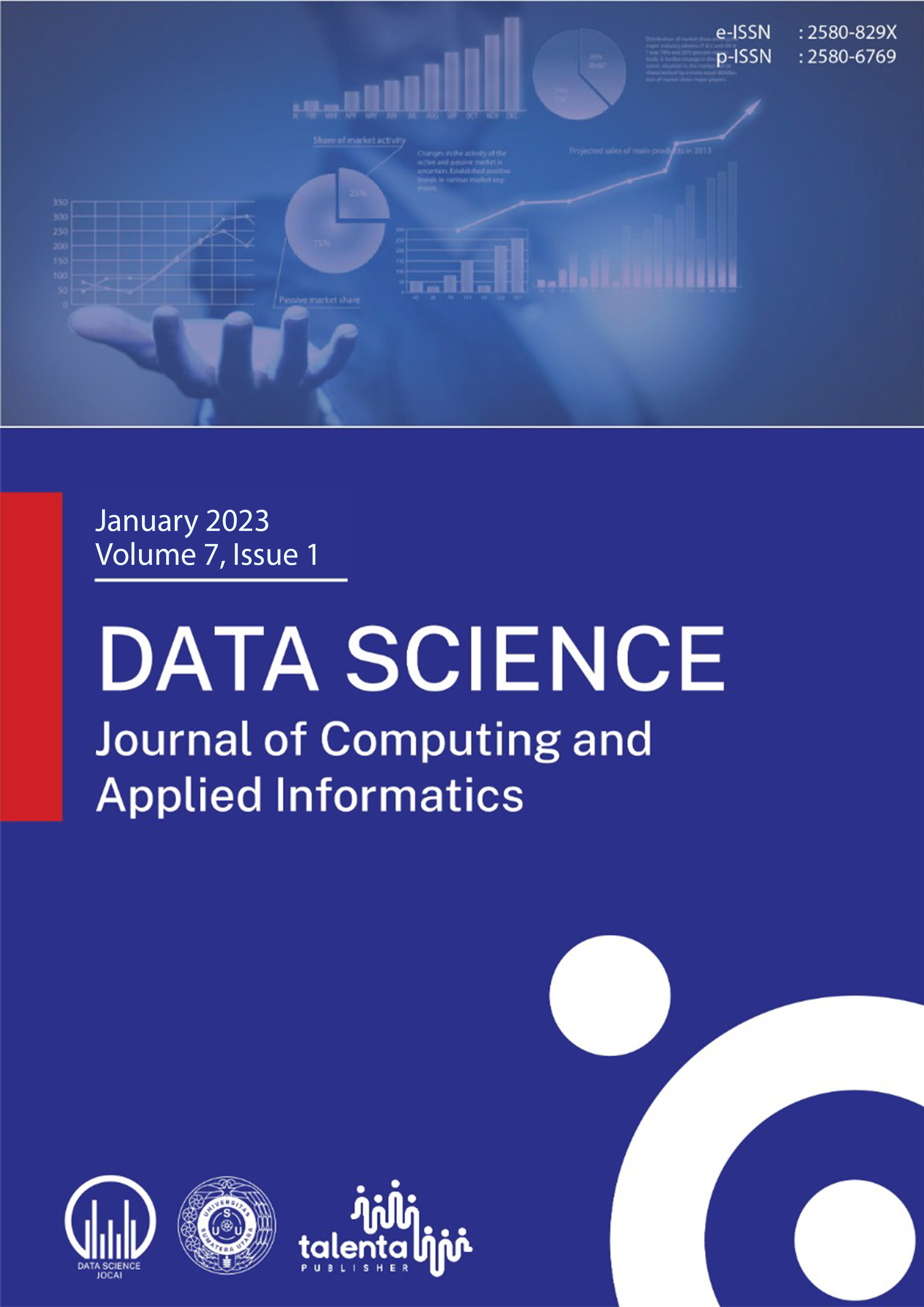Bayesian Regression for Predicting Price Empirical Evidence in American Real Estate
DOI:
https://doi.org/10.32734/jocai.v7.i1-10082Keywords:
Bayesian, Bayesian linear regression, Bayesian inference, real estate, housing, modelling, predictionAbstract
The two foremost aims of classical regression are to assess the structure and magnitude of the relationship between variables. Despite the aforementioned benefits, unlike classical regression, which only offers a point estimate and a confidence interval, Bayesian regression offers the whole spectrum of inferential solutions. The results of this study demonstrate the Bayesian approach's suitability for regression tasks and its advantage in accounting for additional a priori data, which often strengthens studies. Using data from Boston Housing provided by from UCI ML Repository, this study proves that the prior distributions have the benefit of producing analytical, closed-form conclusions, which eliminates the need to use numerical techniques like Markov Chain Monte Carlo (MCMC). Second, software implementations are offered together with formulas for the posterior outcomes that are supplied, clarified, and shown. The assumptions supporting the suggested approach are evaluated in the third step using Bayesian tools. Prior elicitation, posterior calculation, and robustness to prior uncertainty and model sufficiency are the three processes that are essential to Bayesian inference.
Downloads
References
Anggraeni, D., Sugiyanto, K., Zam Zam, M. I., & Patria, H. (2022). Stock Price Movement Prediction using Supervised Machine Learning Algorithm: KNIME. Junal Akun Nabelo: Jurnal Akuntansi, Netral, Akuntabel, Objektif. 4(2), 671–68
Castillo, I., Schmidt-Hieber, J., & Van der Vaart, A. (2015). Bayesian linear regression with sparse priors. The Annals of Statistics, 43(5), 1986-2018.
Gelman, A., Goodrich, B., Gabry, J., & Vehtari, A. (2019). R-squared for Bayesian regression models. The American Statistician.
Kurniawan, A., Rifa'i, A., Nafis, M.A., Andriaswuri, N. S., Patria, H., & Purwitasari, D. (2022). Feature Selection and Sensitivity Analysis of Oversampling in Big and Highly Imbalanced Bank's Credit Data. 10th International Conference on Information and Communication Technology (ICoICT), 2022, pp. 35-40, doi: 10.1109/ICoICT55009.2022.9914889.
MacKay, D. J. (1994). Bayesian nonlinear modeling for the prediction competition. ASHRAE transactions, 100(2), 1053-1062.
Mariana, CD., & Patria, H. (2021). Are Electronic Vehicle Stocks in ASEAN-5 Countries Investable during the Covid-19 Pandemic? Perceptions of Energy Resources Efficiency for Sustainable Development in the Developing Context of Nigeria: Implications for Enterprise Development in the Energy Sector. P. 184.
Lynch, S. M. (2007). Introduction to applied Bayesian statistics and estimation for social scientists (Vol. 1). New York: Springer.
Minka, T. (2000). Bayesian linear regression. Technical report, MIT.
Mitchell, T. J., & Beauchamp, J. J. (1988). Bayesian variable selection in linear regression. Journal of the american statistical association, 83(404), 1023-1032.
Patria, H., & Adrison, V. (2015). Oil Exploration Economics: Empirical Evidence from Indonesian Geological Basins. Economics and Finance in Indonesia, 61(3), 196. https://doi.org/10.7454/efi.v61i3.514
Patria, H. (2021). The Role of Success Rate, Discovery, Appraisal Spending, and Transitioning Reion on Exploration Drilling of Oil and Gas in Indonesia in 2004–2015. Economics and Finance in Indonesia, 61(3), 196. https://dx.doi.org/10.47291/efi.v67i2.952
Patria, H. (2022a). Predicting the Oil Investment Decision through Data Mining: Empirical Evidence in Indonesia Oil Exploration Sector. Data Science: Journal of Computing and Applied Informatics (JoCAI), 6(1), 1-11. https://doi.org/10.32734/jocai.v6.i1-7539
Patria, H. (2022b). Predicting Fraudulence Transaction under Data Imbalance using Neural Network (Deep Learning). Data Science: Journal of Computing and Applied Informatics, 6(2), 67-80. https://doi.org/10.32734/jocai.v6.i2-8309
Pérez, P., de Los Campos, G., Crossa, J., & Gianola, D. (2010). Genomicâ€enabled prediction based on molecular markers and pedigree using the Bayesian linear regression package in R. The plant genome, 3(2).
Raftery, A. E., Madigan, D., & Hoeting, J. A. (1997). Bayesian model averaging for linear regression models. Journal of the American Statistical Association, 92(437), 179-191.
Vineeth, N., Ayyappa, M.R., & Bharathi, B. (2018). House Price Prediction Using Machine Learning Algorithms.
West, M. (1984). Outlier models and prior distributions in Bayesian linear regression. Journal of the Royal Statistical Society: Series B (Methodological), 46(3), 431-439.
Zulfikri, F., Tryanda, D., Syarif, A., & Patria, H.(2021). Predicting Peer to Peer Lending Loan Risk Using Classification Approach. International Journal of Advanced Science Computing and Engineering, 3(2), 94–100. https://doi.org/10.30630/ijasce.3.2.57
Phan, T. D. (2018). Housing Price Prediction Using Machine Learning Algorithms: The Case of Melbourne City, Australia. International Conference on Machine Learning and Data Engineering (iCMLDE), pp. 35-42, doi: 10.1109/iCMLDE.2018.00017.
Yu, L., Jiao, C., Xin, H., Wang, Y., & Wang, K. (2018). Prediction on Housing Price Based on Deep Learning. World Academy of Science, Engineering and Technology, International Journal of Computer, Electrical, Automation, Control and Information Engineering, 12, 90-99.
Downloads
Published
How to Cite
Issue
Section
License
Copyright (c) 2023 Data Science: Journal of Computing and Applied Informatics

This work is licensed under a Creative Commons Attribution-ShareAlike 4.0 International License.















